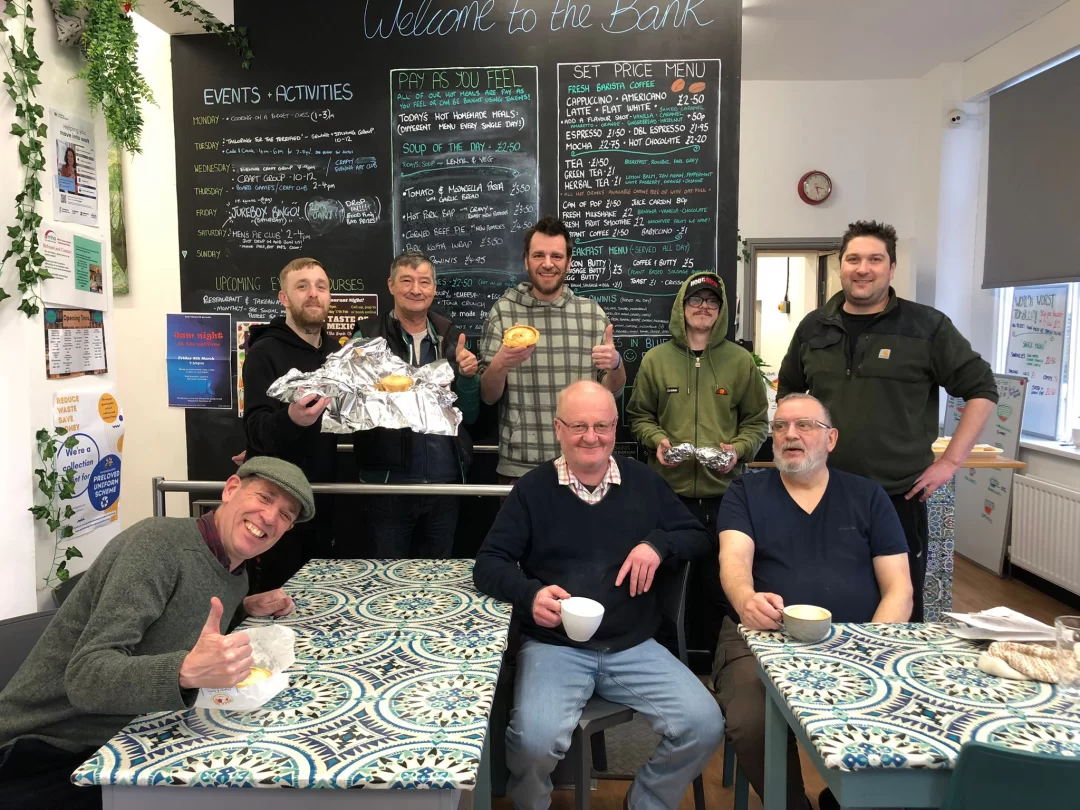In a new blog, Dr Dimitrios Panayotopoulos-Tsiros argues that men’s mental health benefits from viewing community-led initiatives as vital social infrastructure, using the Bennett School’s framework to make their value visible.

Research on healthcare as social infrastructure by the Bennett School of Public Policy suggests that health systems should be treated not as short-term services, but as long-term assets that underpin economic and social resilience. A new UCL Grand Challenges study into Men’s Mental Health and Wellbeing suggests the same principle extends beyond hospitals and clinics, to the non-clinical community-led initiatives that quietly sustain men’s mental health. The Bennett School’s framework for measuring social and cultural infrastructure is a useful tool for making visible these types of initiatives.
Regional and demographic health inequalities in England have been extensively evidenced in recent years, with the latest ONS report highlighting that men in particular, especially those in the North East of England, experience entrenched isolation, identity loss and worsening mental-health outcomes. Stepping into this gap, community-led, non-clinical initiatives provide culturally familiar, routine forms of support that are accessible, low-pressure and preventive in places that formal services struggle to reach.
Our new UCL Grand Challenges study explores the landscape of these types of initiatives in North East England in partnership with three community-led initiatives: Space North East, Woodshed Workshop, and the Chopwell Regeneration Group. The report documents how ‘activity-first’ settings like walking groups, workshops, cafés and Men’s Pie Clubs generate trust, routine, and belonging for men who often disengage from formal services.
The everyday infrastructure of mental health
Viewed through the Bennett School of Public Policy’s framework for measuring social and cultural infrastructure, we can better understand how these community-led initiatives function as forms of social infrastructure, and in turn how the framework can inform the recognition and support of similar efforts elsewhere. Applying the framework emphasises a simple point: if such initiatives have the characteristics of infrastructure, they should be treated and supported accordingly. The following table demonstrates how the community-led initiatives display the characteristics of social and cultural infrastructure.
| Characteristic | As displayed by community-led initiatives |
| Assets | Initiatives hold accumulated value as places, local knowledge and trust built through years of steady practice. |
| Available | The initiatives are open, local, and easy to access without referral or diagnosis. Anyone can walk in, join a group, or simply be present. |
| Enabling | The initiatives do not fix problems directly but create the conditions for people to regain agency, routine and confidence through shared activity. |
| Non-rival | Each person’s participation strengthens, rather than diminishes, the experience for others: community benefit compounds through use. |
| Social and cultural | The initiatives are deeply rooted in the idioms, humour and routines of daily life in the North East, offering belonging and recognition in ways that formal services rarely can. |
Viewed from this perspective, men’s walking groups, workshops, and Men’s Pie Clubs should not be seen as peripheral to the system of care; rather, as stable, locally rooted assets that sustain community connection and wellbeing, they constitute a vital part of its underlying infrastructure. Recognising them as such is not just a matter of definition but rather a policy choice about what kinds of assets we as a society believe are key to keep communities healthy and resilient.
Recognising social infrastructure
Despite their impact, these initiatives operate on fragile ground. Many rely on short-term grants, borrowed spaces, and the goodwill of volunteers. As the study concludes, the question should no longer be whether to sustain them, but how to do so consistently. Local authorities and funders need a way to see these community-led interventions as part of the local infrastructure. Here too, the framework provides a route forward.
Once these initiatives are recognised as infrastructure, the next step is measurement – not as an abstract exercise, but as a clear process that helps define purpose, identify assets, and present evidence for action. That begins with understanding the purpose of measurement; in this case, to make visible the stock and use of assets that sustain connection and belonging for men in the North East, and to understand where provision falls short. Combining top-down data with bottom-up insight, as in our UCL Grand Challenges Study, and as the Bennett School’s framework recommends, ensures that measurement reflects lived experience as well as institutional need. Once visible, these initiatives should be supported with the same principles that guide any essential infrastructure: stable funding, fair access, and investment where need is greatest. Provision should reflect the well documented geography of need, and resources must reach the communities most exposed to isolation and despair. Together, these steps mark a shift from treating non-clinical interventions as temporary projects to embedding them within the long-term fabric of care and prevention.
Reframing care as infrastructure
Treating these initiatives as infrastructure is significant because it means nothing new needs to be invented, potentially making integration into existing policy and funding frameworks easier for policymakers operating in resource-constrained environments. Since the foundations, mechanisms, and delivery partners already exist, recognition in policy terms simply brings them into view as part of the system and helps keep them valued. Predictable support allows them to plan, retain volunteers, and meet rising demand while staying true to their purpose. And this reframing has practical consequences. Once seen as infrastructure, these settings fall within the same policy logic that governs transport, housing, or health. They become part of a system that can be planned for, invested in, and held to long-term standards rather than short-term projects.
For policy, this means three things.
First, prevention must become the focus. The World Health Organisation’s call to design for social connection points towards early, relational forms of care. Community-led, non-clinical initiatives already do this work daily, and their preventive role offers a clear route for health agencies to integrate community-based approaches within broader systems of care.
Second, policy needs to value consistency over novelty. These groups thrive on stability, the weekly rhythm, the familiar spaces and people, the trust that is built over time. Long-term commissioning, core funding, and light-touch regulation would go further than one-off innovation grants.
Third, these interventions do not replace clinical care but complement it. They provide steady, daily support at the stage when people recognise they need support but are still waiting for or are unsure about formal treatment. The practical opportunity is integration. For instance, Combined Authorities can convene partners and align prevention priorities and funding at city-region scale; Integrated Care Systems can embed these groups within community mental-health pathways; and local authorities can enable delivery through stable spaces and multi-year, light-touch support. If these functions are aligned, community-led interventions can relieve pressure on clinical services and reach people who might not otherwise engage.
The urgent action therefore is to build on what already works, so that the everyday settings sustaining men’s wellbeing can do so with the security they deserve. Recognising them as social infrastructure reframes care not simply as a service delivered to people, but as a shared capacity we maintain together as a nation. One that, in the words of James Fildes, founder of Space North East, stops “sacrificing community for convenience”.
The views and opinions expressed in this post are those of the author(s) and not necessarily those of the Bennett Institute for Public Policy.






